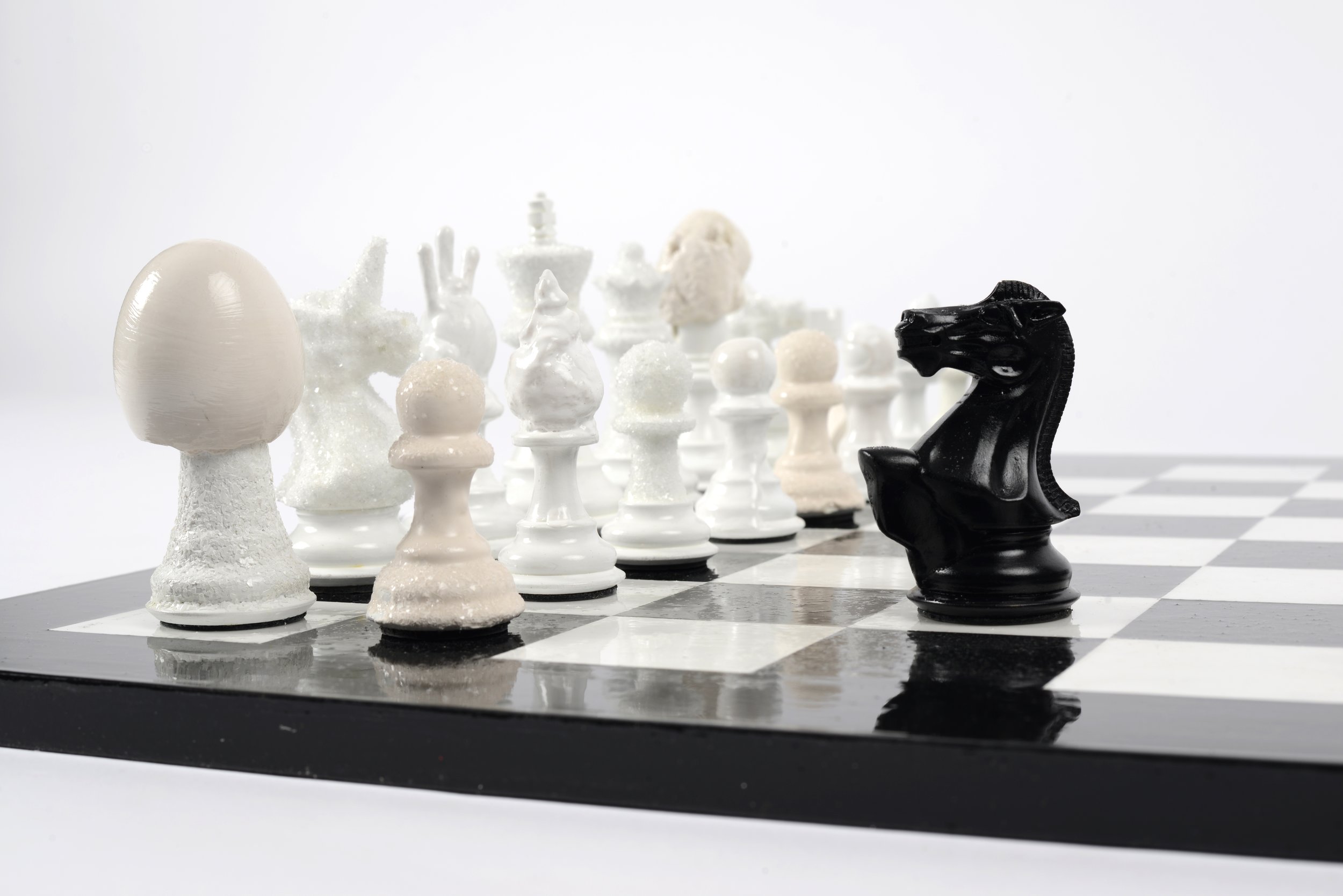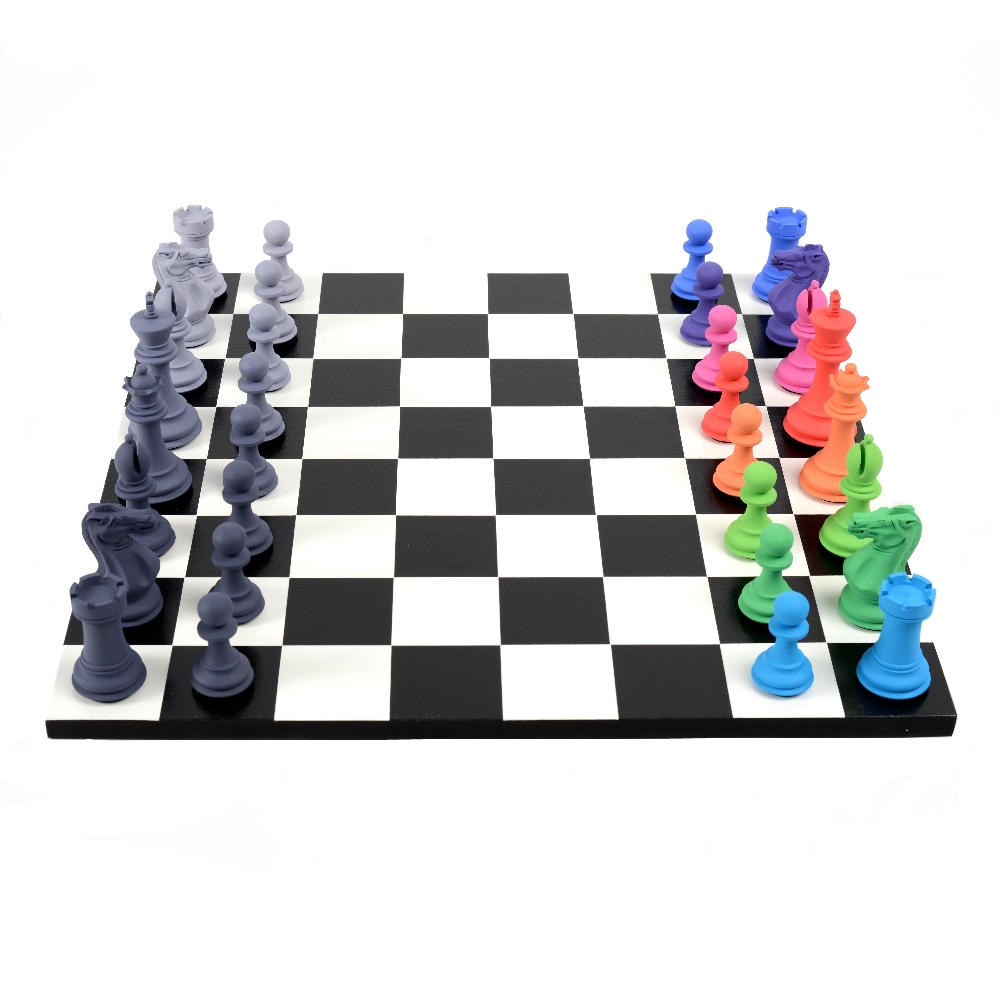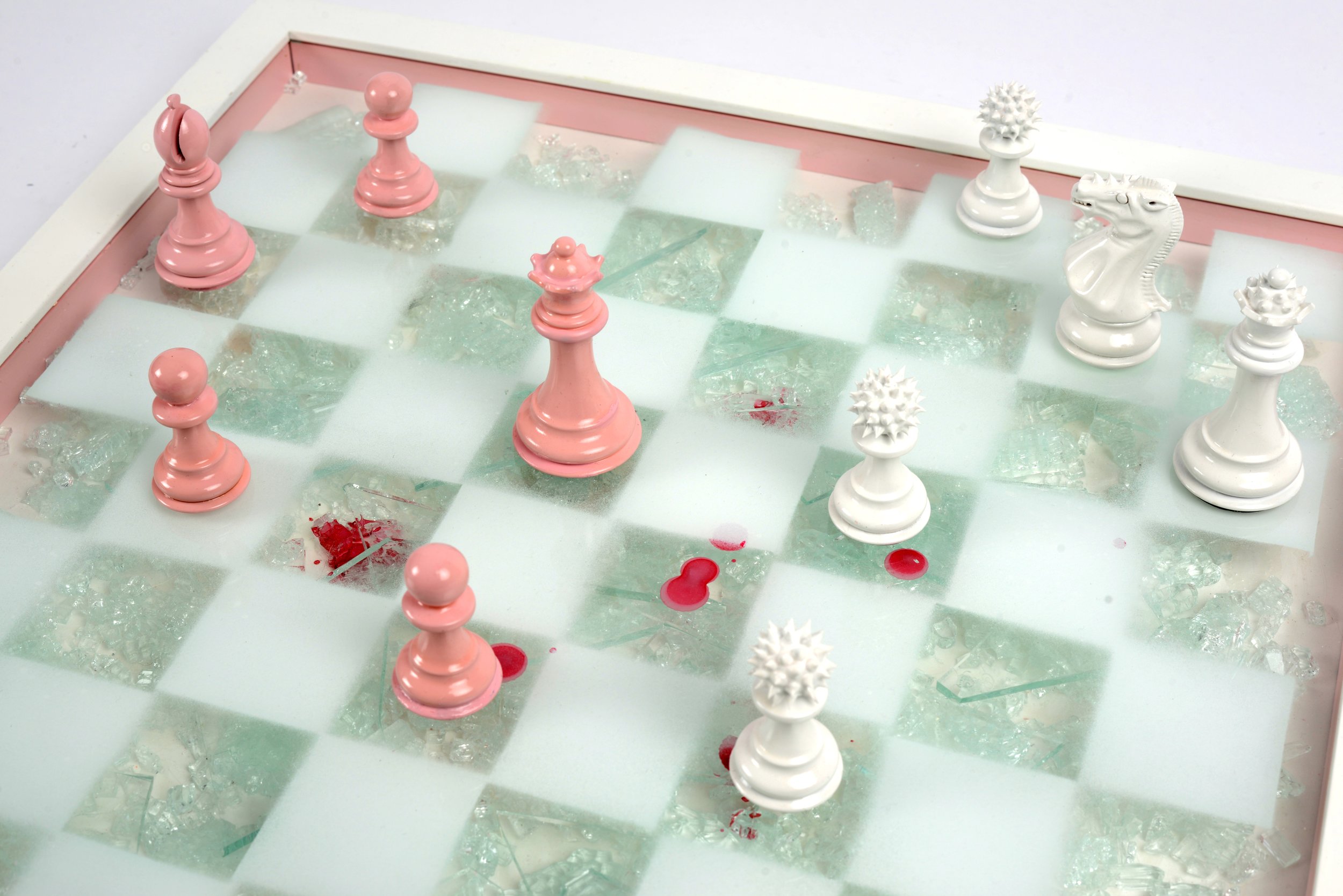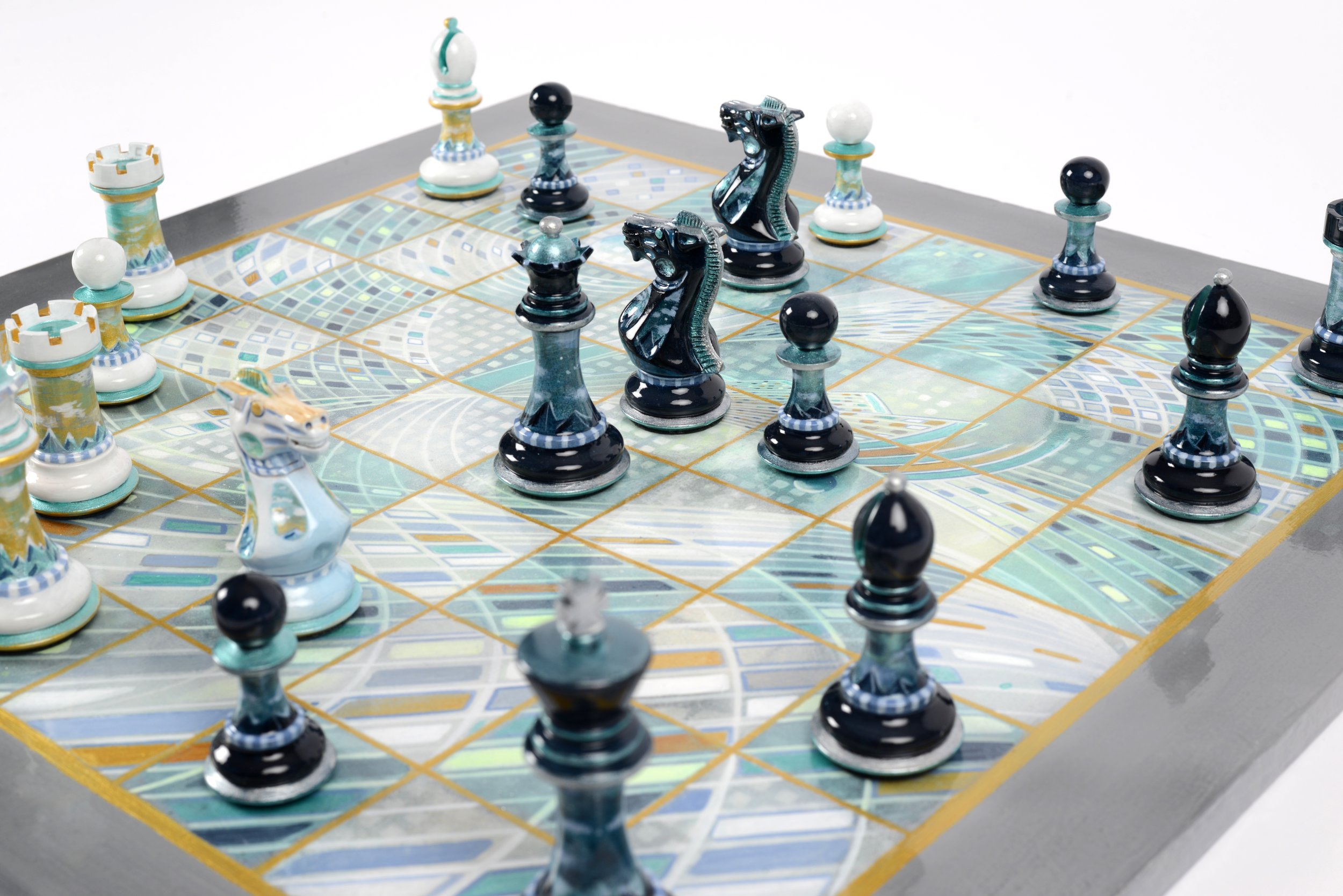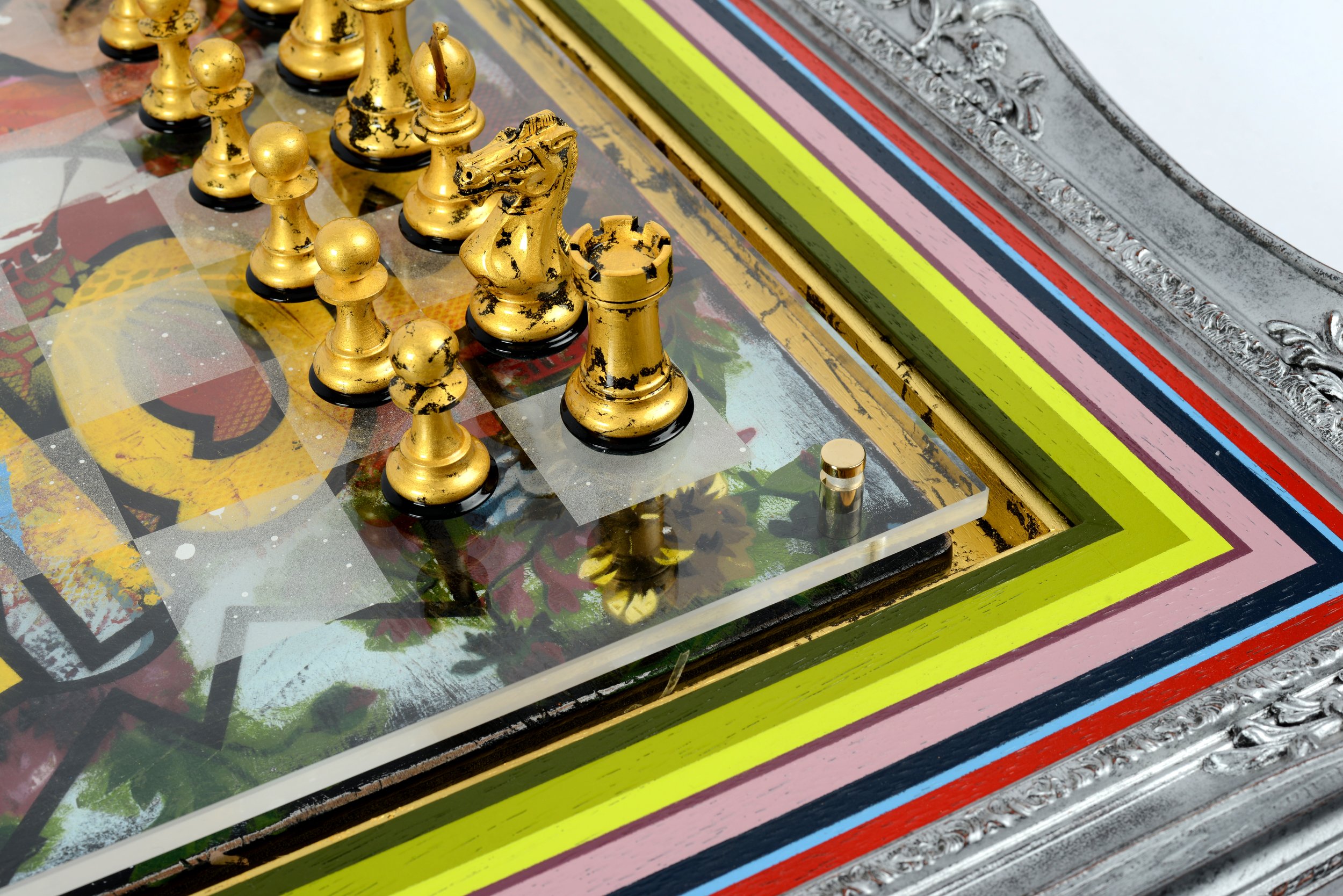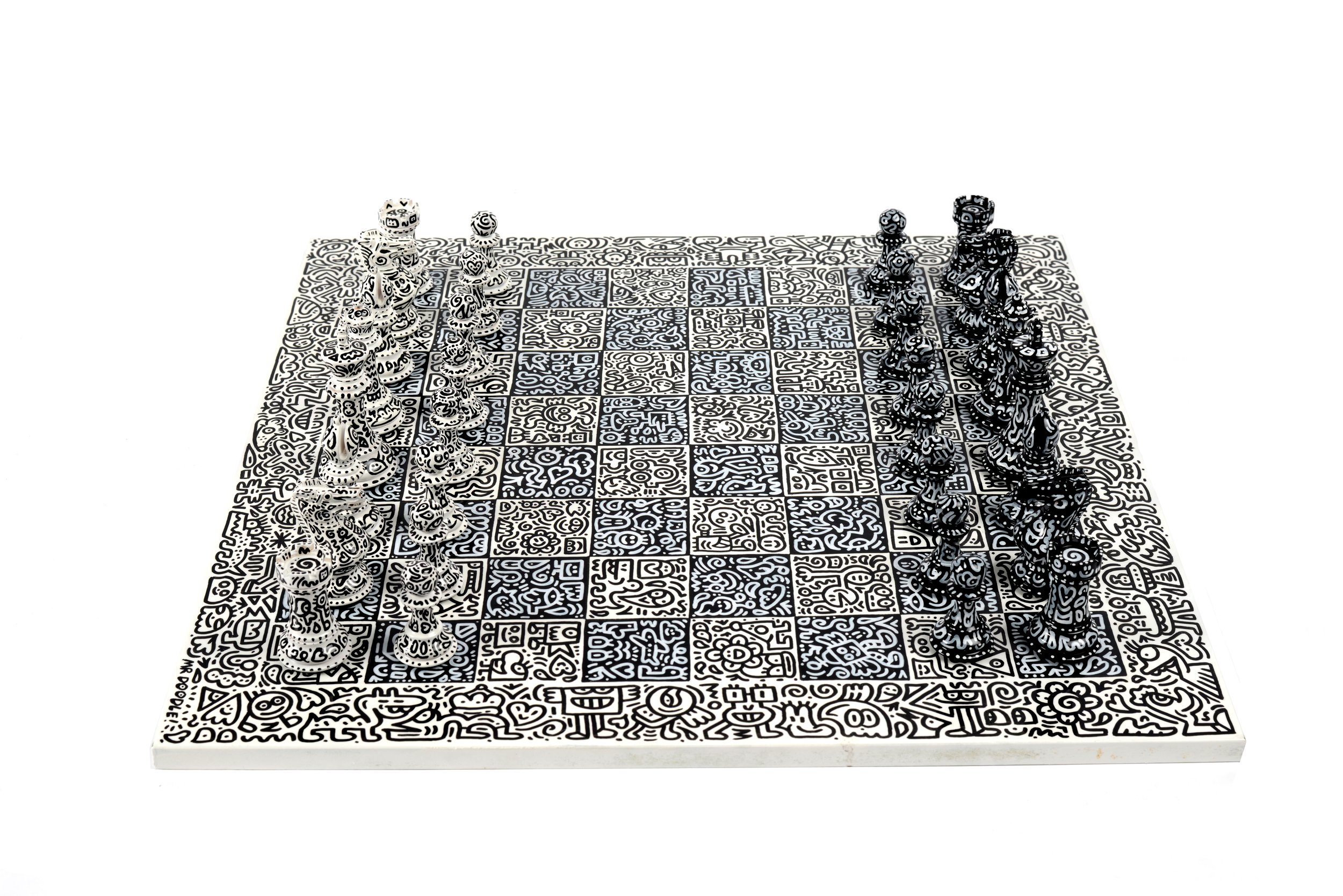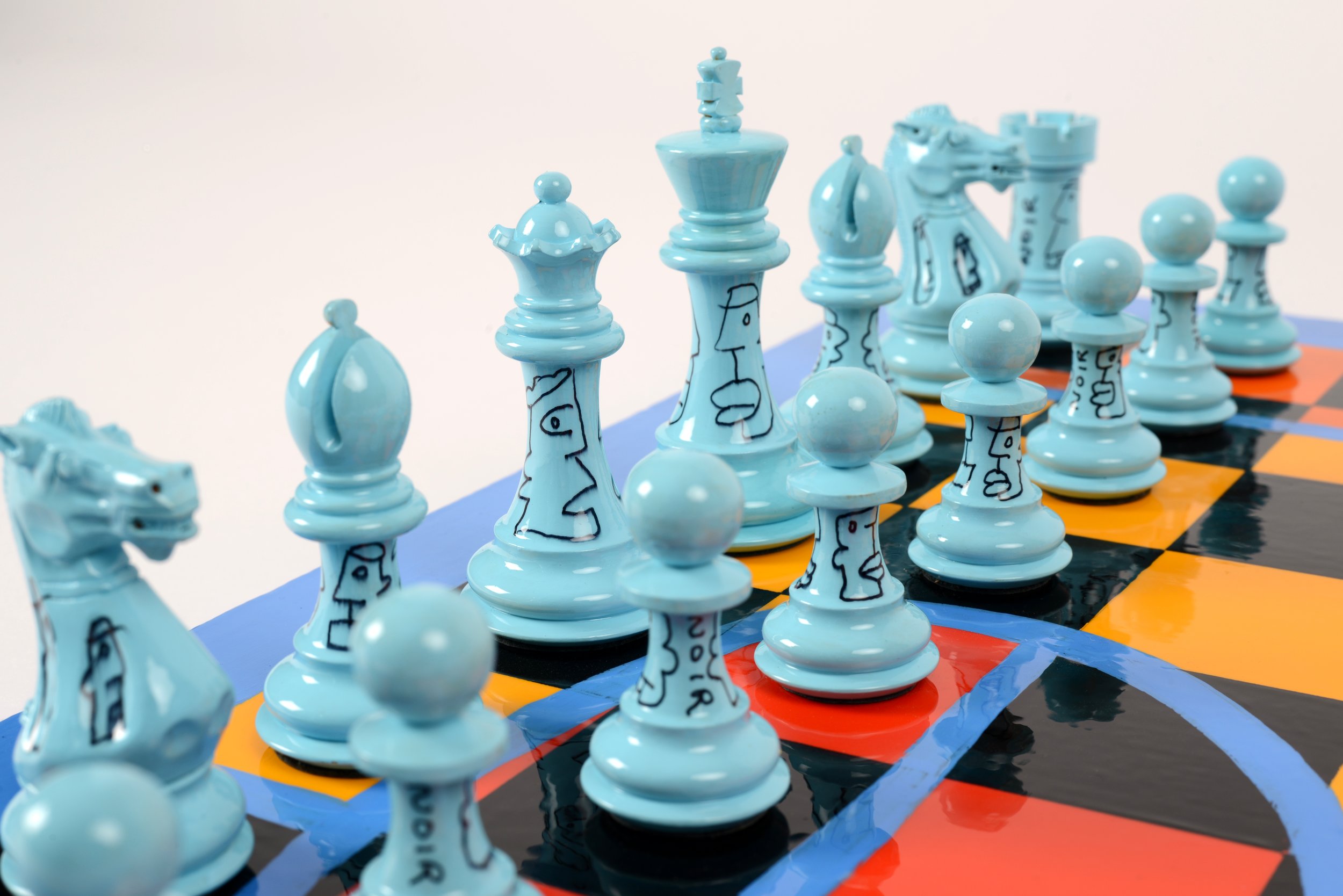Purling London’s classic games are internationally renowned, contrasting traditional, by-hand-manufacturing with vivid colour, abstract art and theatrical illumination. Combining classic with a British twist, it is no wonder that the brand is now stocked by luxury stores and leading interior designers around the world. Purling London was established in 2012 by Simon Purkis, and just four years later, in September 2016, it was selected by Europe’s largest design show, Maison & Objet Paris, as a ‘Future Trend’.
“Our goal is to revitalise time-honoured games, mixing established forms with contemporary art and design influences…We aspire to bring back chess, darts and classic games as fashionable and innovative interior design accessories and gifts; embodying precision, history and luxury.”
Simon Purkis, Founder
The history of art and chess is long – reaching back as far as ancient Indian and Islamic games right through to modern artworks by Damien Hirst and Yayoi Kusama. Purling’s collaborations with celebrated, international contemporary artists has always been an integral part of the brand. The traditional Staunton chess set – introduced in 1849 for tournament play and named after one of the best players of the 1840s, Howard Staunton – serves as an unconventional “canvas” upon which invited artists create their one-of-a-kind, hand-painted works.
In 2018, Purling collaborates with the World Chess Hall of Fame (WCHOF) in Saint Louis, presenting the exhibition “Painted Pieces: Art Chess”. Featuring Bold Chess, Neon Chess, and an exciting new experience where the visitors are encouraged to play with select chess sets through virtual reality, the exhibition, which runs until 16 September, also centres upon a series of completely unique chess sets created exclusively for Purling London by 20 leading artists from around the world.
Stunning in design and concept, these artist-created sets address themes and ideas as diverse as peace and war, walls, divisions, travel, space exploration, feminism, environmental issues and air pollution, while simultaneously touching upon some of the most current trends in interior design: minimalism and maximalism, monochrome, neon, metallics and street art.


